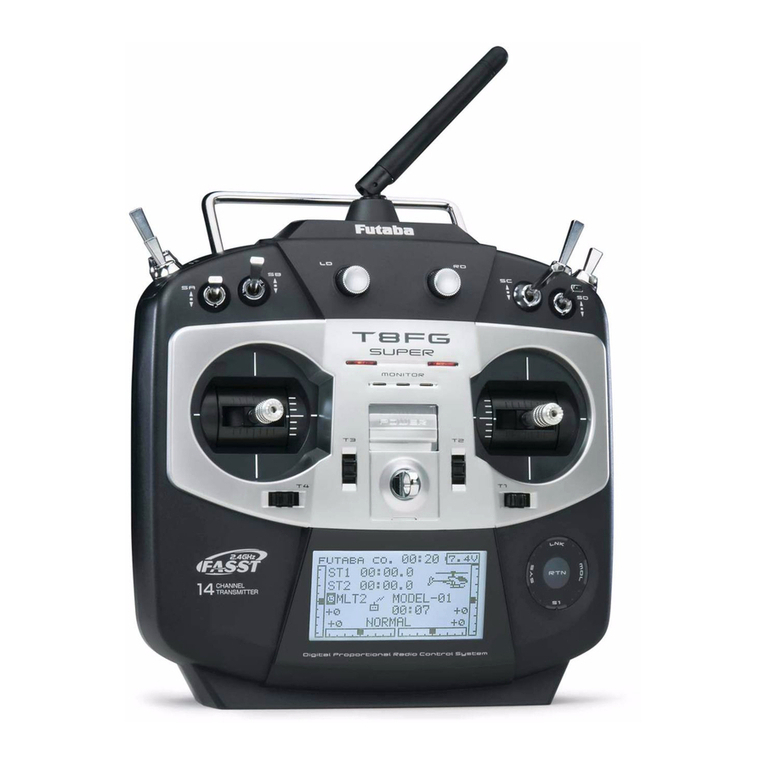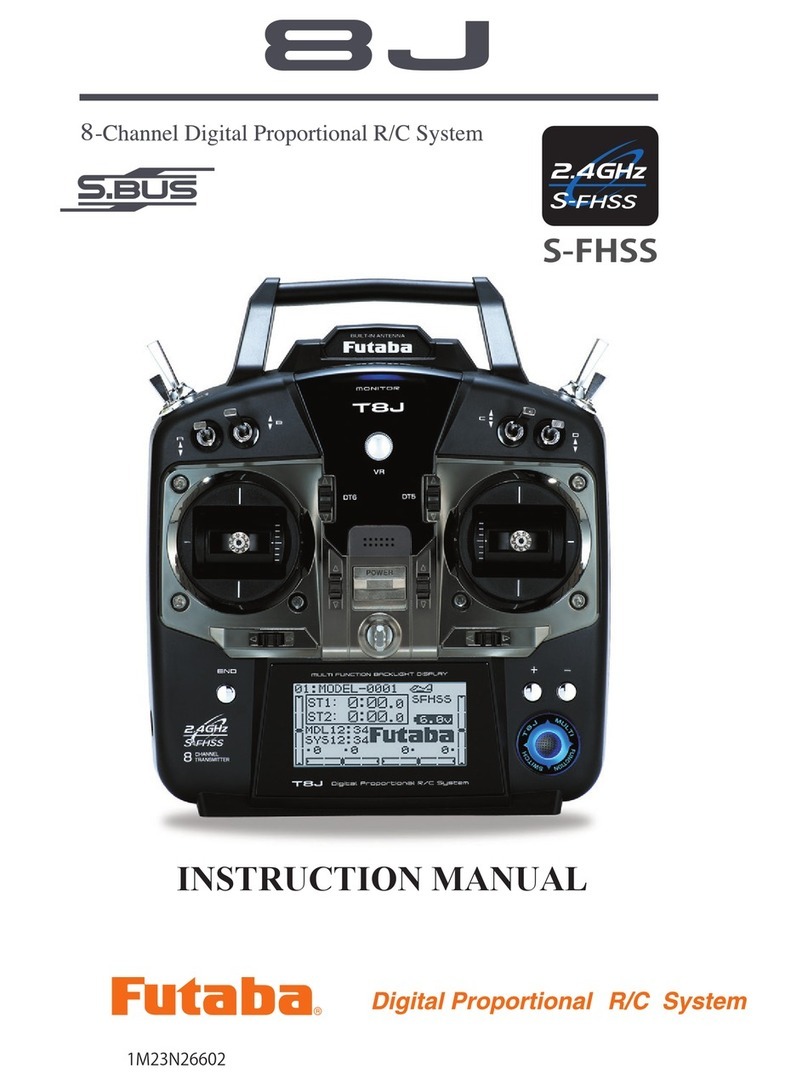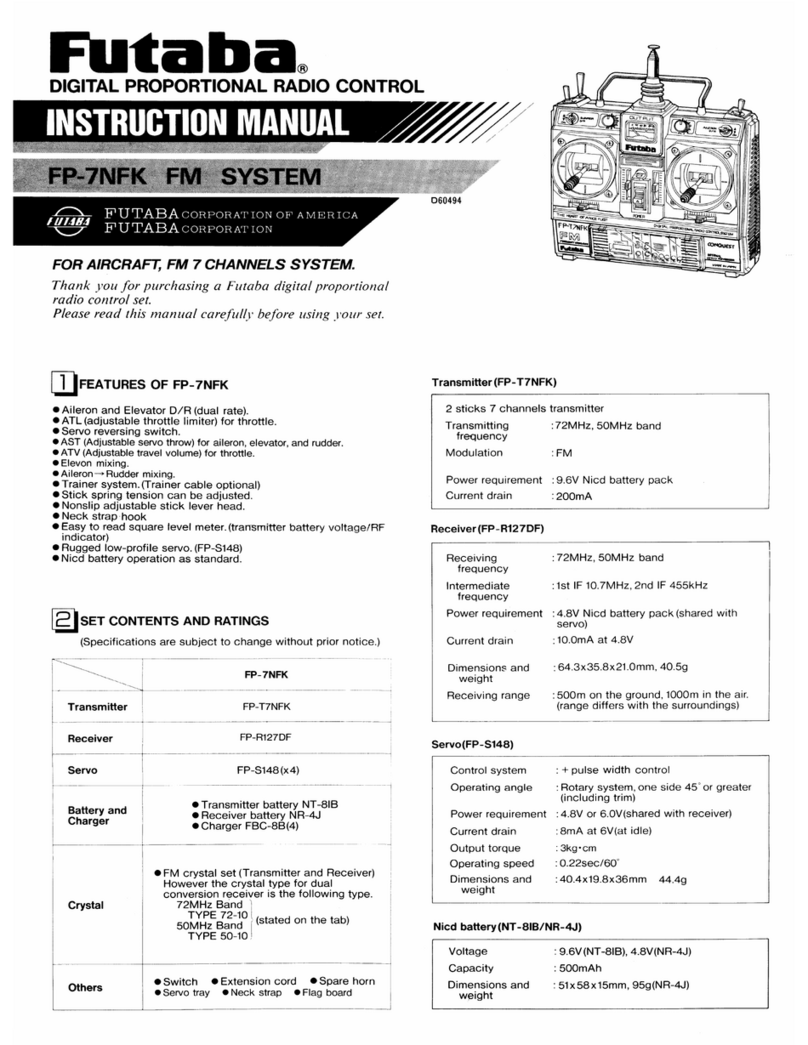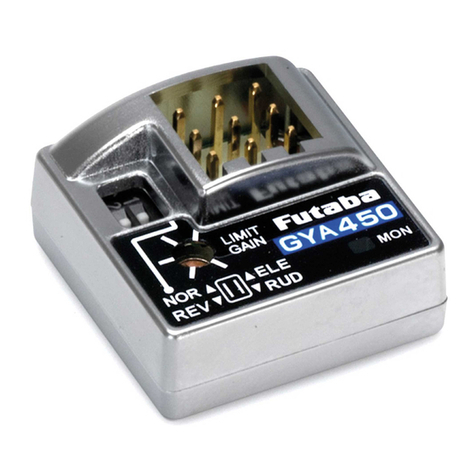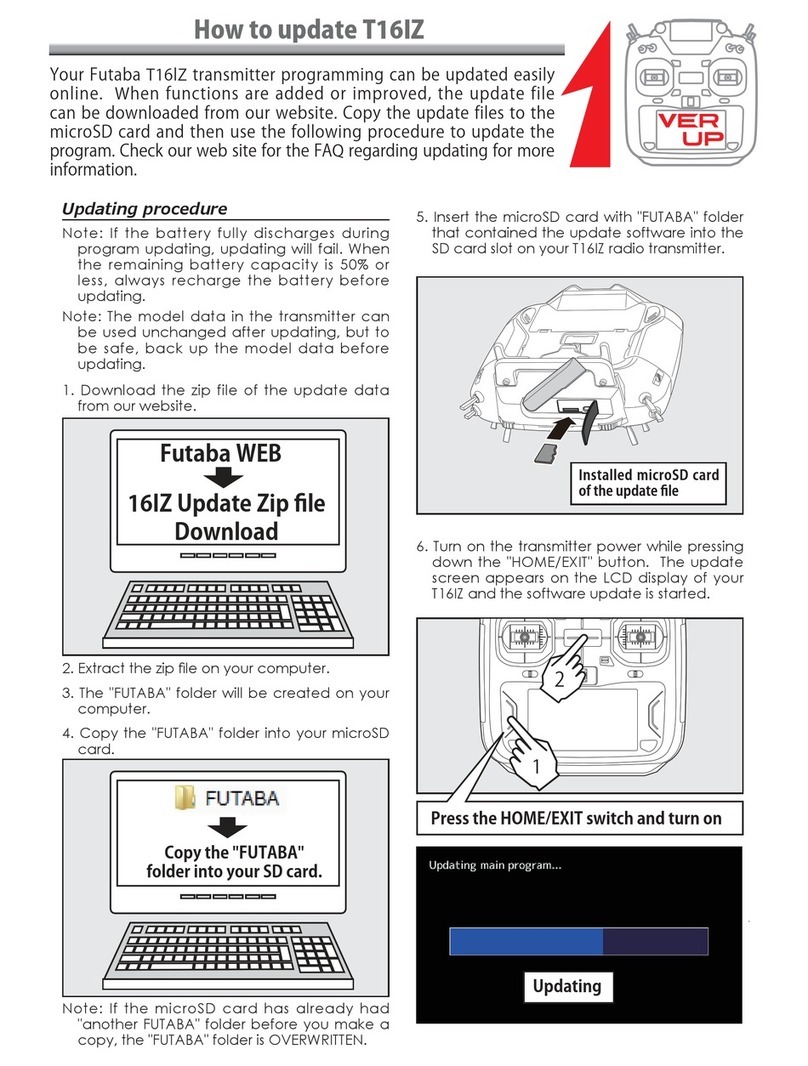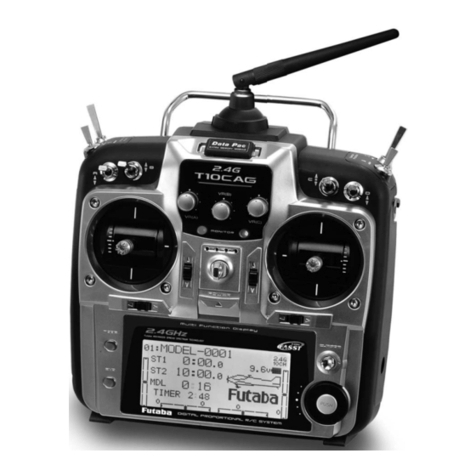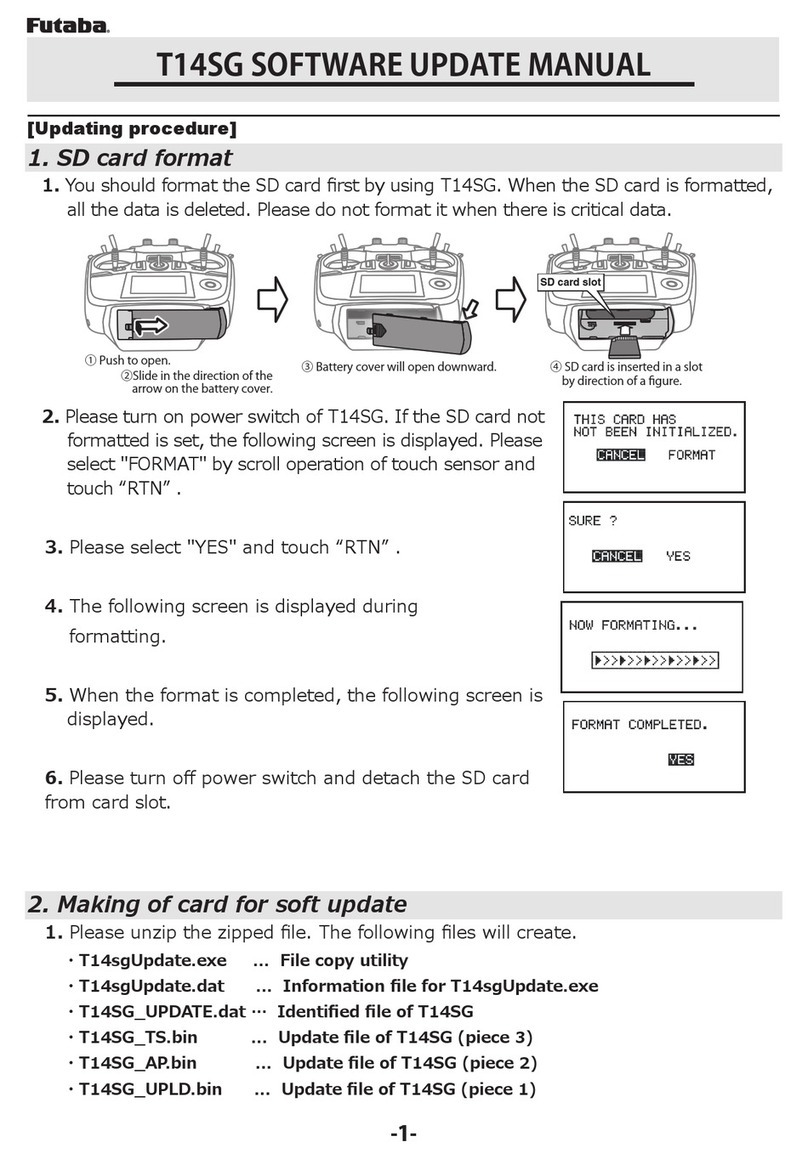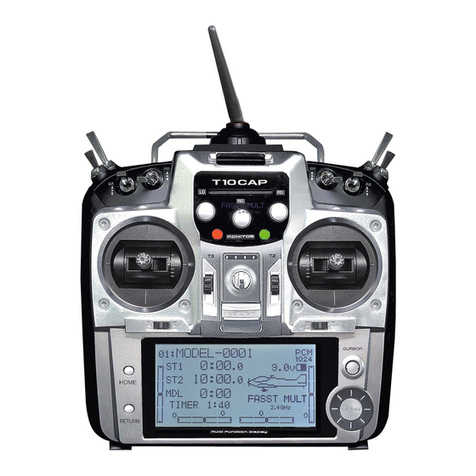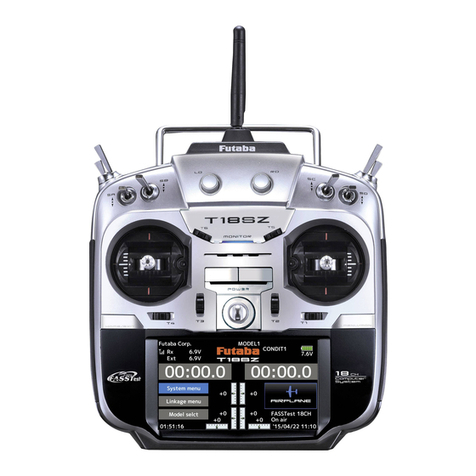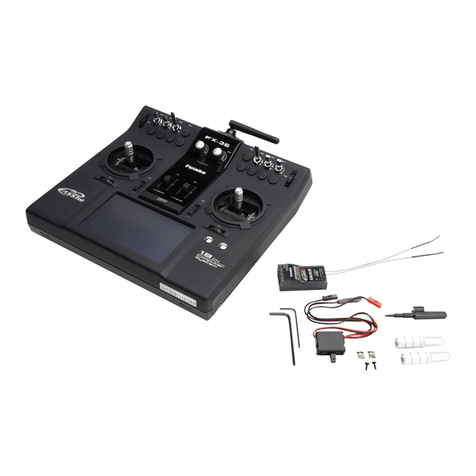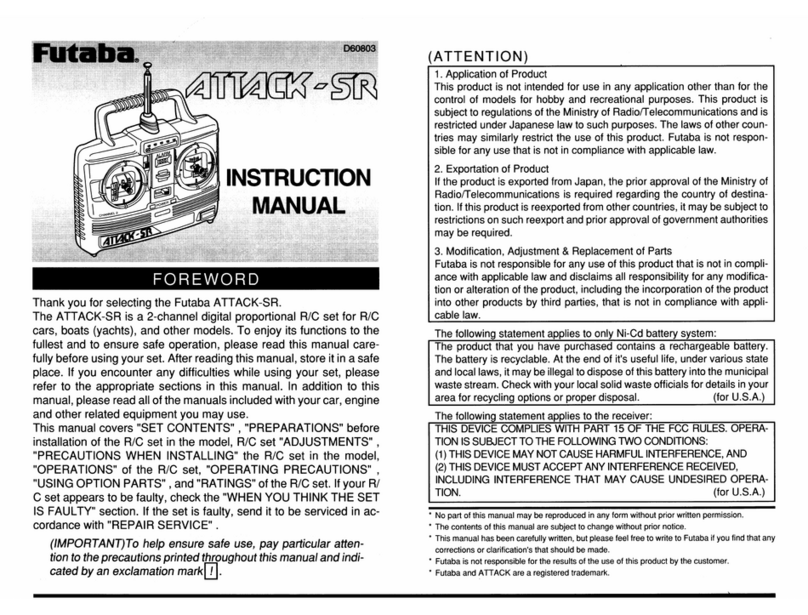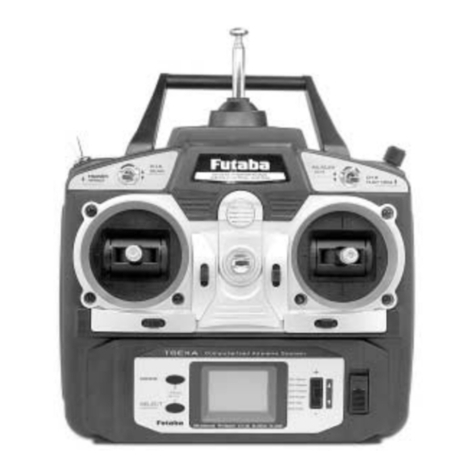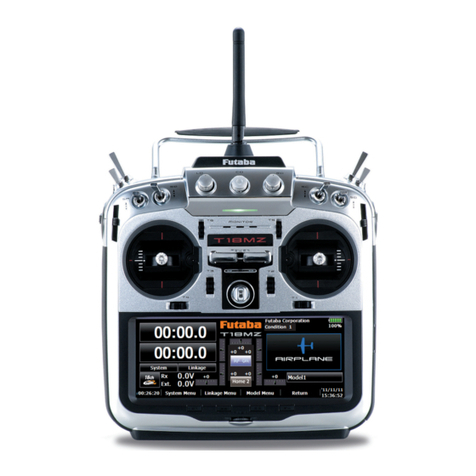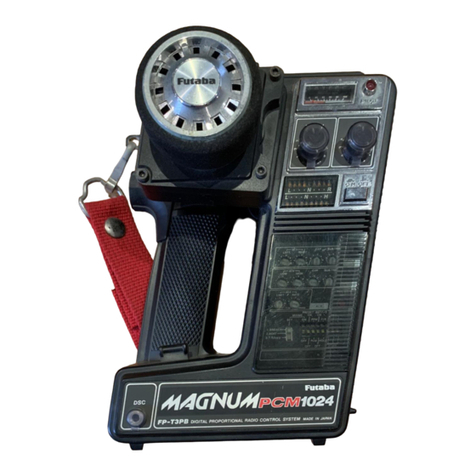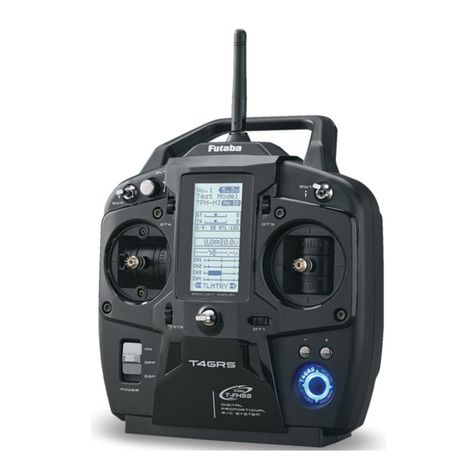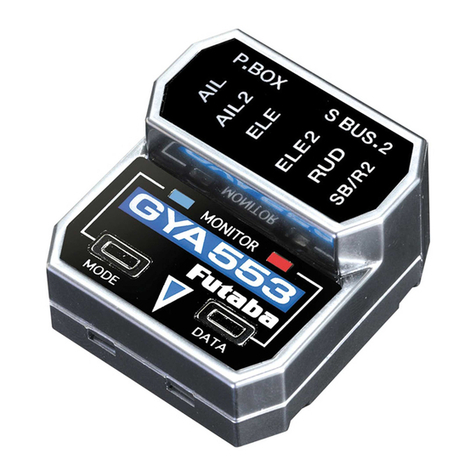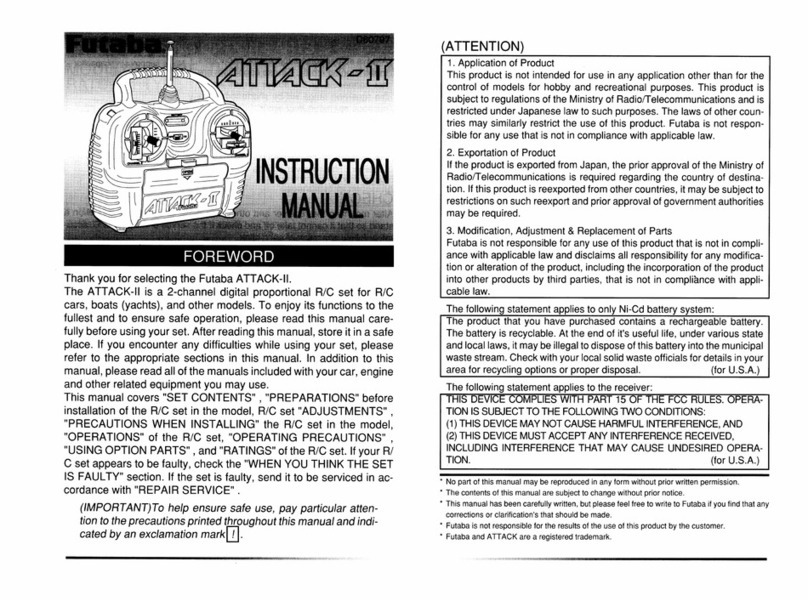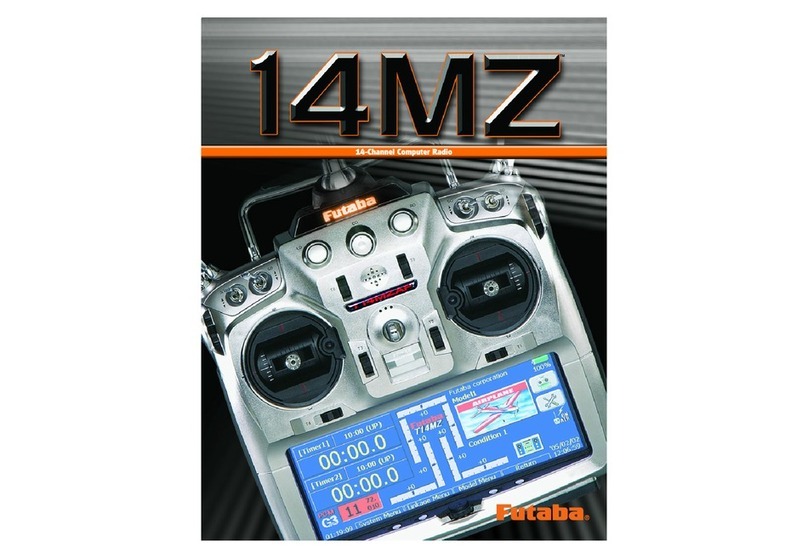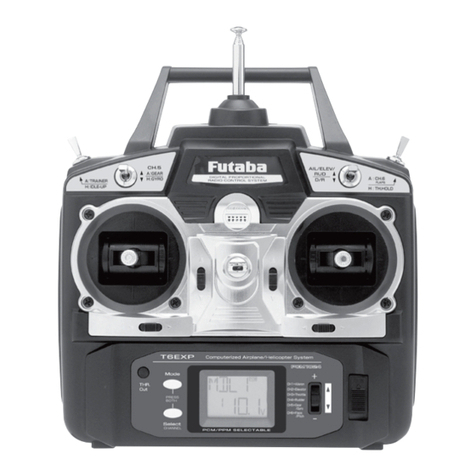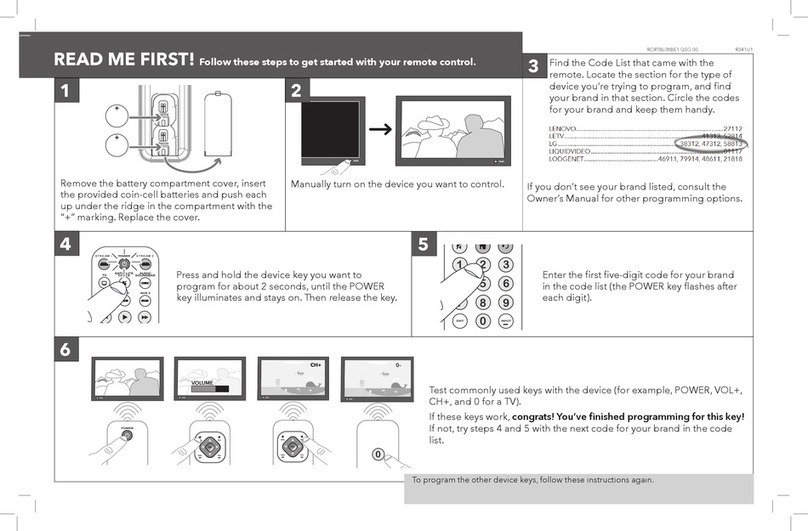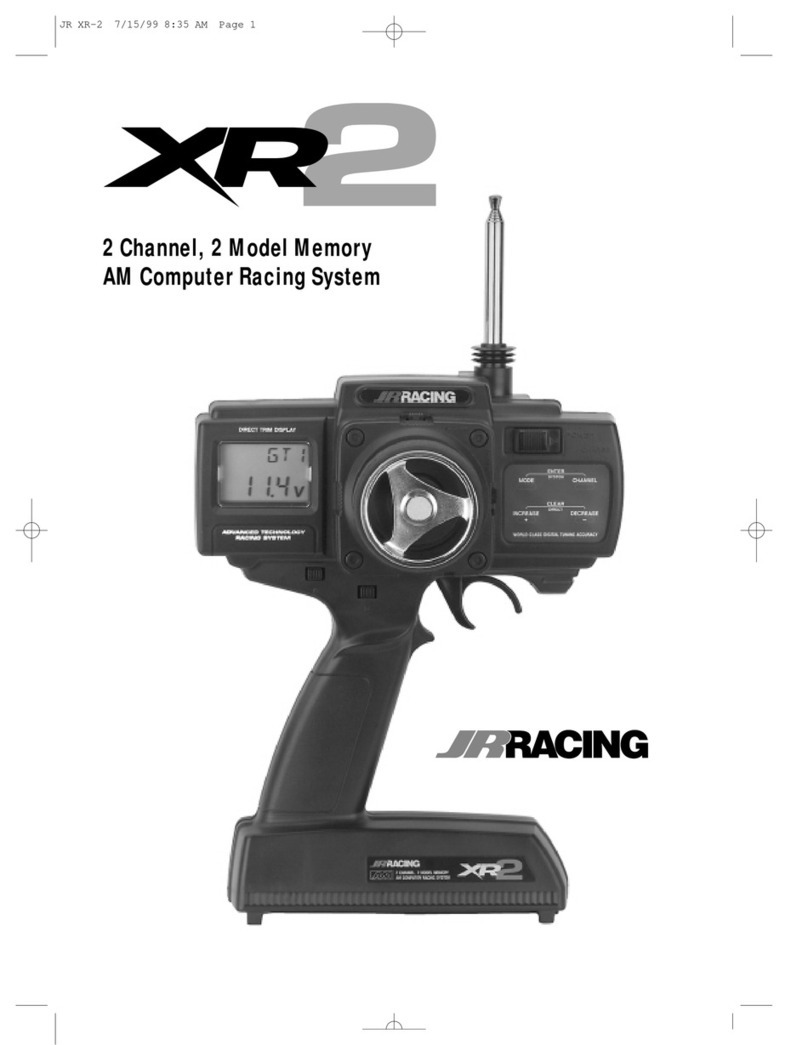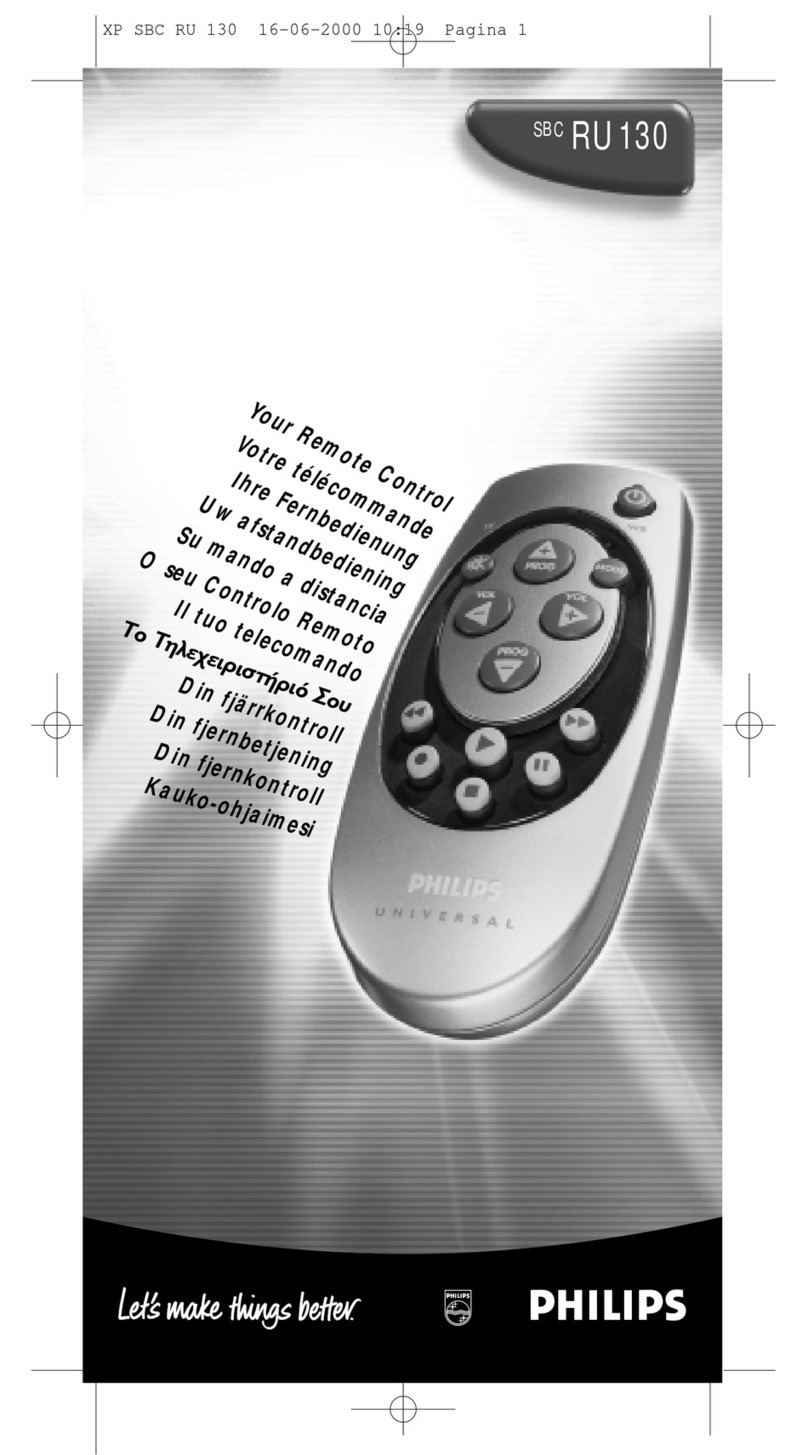223
To ensure safe use, observe the following precautions.
Precautions During Flight
• Do not fly or turn on simultaneously with
another radio on the same frequency.
Interference will cause
a crash. Use of the
same frequency will
cause interference
even if the modulation
method (AM, FM,
PCM) is different.
• Do not fly on rainy or
windy days, or at night.
Water will penetrate into the
transmitter (Tx) and cause
faulty operation, or loss of
control, and cause a crash.
Do not fly in the following places:
• Near other R/C flying fields (within about
2.5 miles [4km]).
• Near people on the ground, or objects in
the air.
• Near homes, schools, hospitals, or other
places where there are a lot of people.
• Near high tension lines, high structures,
or communication facilities. Radiowave
interference and obstructions may cause a crash. A
crash caused by trouble in the R/C set, or the model
itself, may cause death or property damage.
Other Precautions
• Do not fly when you are tired, sick, or
intoxicated. Fatigue, illness, or intoxication will
cause a loss of concentration or normal judgment
and result in operation errors and a crash.
• Extend the antenna to its full
length. If the antenna is shortened,
the effective range of the radio signal
will be shorter.
• Check that the transmitter (Tx) antenna is
not loose. If the transmitter antenna comes off
during use, control will be lost and the model
will crash.
• Always test the R/C set before use. Any
abnormality in the R/C set, or model, may cause a
crash. Before starting the engine, check that the
direction of operation of each servo matches the
operation of its control stick. If a servo does not move
in the proper direction, or operation is abnormal, do
not fly the plane.
• When placing the transmitter (Tx) on the
ground during flight preparations, be sure
that the wind cannot knock it over. If it is
knocked over, the throttle stick may be pushed to full
throttle, the engine will speed up and may create a
very dangerous situation.
• When adjusting the R/C set, always stop
the engine. If the engine suddenly goes to full
throttle, it may cause an injury.
• Do not get fuel, oil, etc. on plastic parts.
The plastic may melt, discolor, become brittle and fail
to function.
• Always use Genuine Futaba transmitters,
receivers, servos, ESCs, NiCd batteries,
and other optional parts. Futaba is not
responsible for damage, etc. caused by the use of
parts other than Genuine Futaba parts. Use the parts
described in the instruction manual and catalogs.
NiCd Battery Charging Precautions
Always charge the NiCd batteries before
each flight. If the battery goes dead during flight, the
plane may crash or fly away.
Charge the R/C NiCd battery with the
standard charger, or fast field charger (sold
separately). Overcharging may cause burns, fire,
injury, blindness, etc. due to overheating, breakage,
electrolyte leakage, etc.
Do not short the NiCd battery connector
terminals. Shorting the terminals will cause sparking
and overheating and result in burns or fire.
Do not drop or apply strong shock to NiCd
battery. The battery may short out and cause
overheating or breakage and electrolyte leakage,
resulting in burns or damage from chemical contents.
SAFETY INFORMATION
Problem Possible causes Solution
Short range
Collapsed or loose Tx antenna...........Fully extend the antenna and make sure it is
securely attached
Interference.........................................Check frequencies in area and
check Rx installation
Rx antenna poorly routed ...................Reroute antenna away from other wiring
Severed Rx antenna ...........................Send to Futaba service center for new antenna
Tx or Rx battery not fully charged ......Fully charge batteries prior to use
Rx or Tx out of tune............................Send to Futaba service center for retuning
Crash damage ....................................Send to Futaba service center for inspection and repair
Faulty Rx or Tx crystal ........................Install new crystal and perform range check
Sluggish servo response
Low Tx or Rx batteries........................Fully charge batteries prior to use, may need cycling
(you must remove the batteries from the TX to cycle,
and this requires opening the Tx case.)
Binding servos causing
excess battery drain............................Check pushrods and free binding
Too many servos.................................Use fewer servos if possible, or use a higher capacity
battery pack
Tx meter low
Tx batteries are discharged ................Fully charge batteries prior to use
Tx meter above red zone
but servos do not function
Rx batteries are discharged................Fully charge batteries prior to use
No power to receiver...........................Move Rx switch harness to “ON” position
Switch harness incorrect ....................Make sure all leads are in the proper positions
Reversing switch stuck in-between
positions..............................................Move switch fully to one side or the other
Interference or servos glitching
Another Tx is on your channel............Turn off immediately and do not operate your system
until other user is finished
Outside interference............................Check local R/C club to learn of dangerous frequencies
in your area
Engine or motor electrical noise .........Reroute antenna or servo leads as far away from
engine or motor as possible
One glitching servo
Malfunctioning servo...........................Replace servo
Other interference...............................Check quality and installation of servo lead or extension
Servo movement not as expected
Mix accidentally activated ...................Check all mix dip switches
Servos connected incorrectly..............Check all servo connections
Interference.........................................See above
Too much/Too little throw ....................Check AST and D/R settings and switches
TROUBLESHOOTING GUIDE
